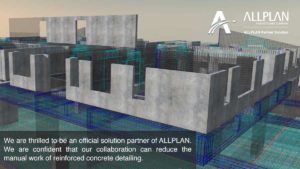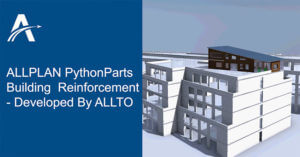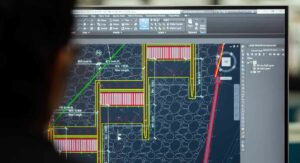
Why does BIM pose a challenge for structural engineers?
The aim of BIM is to make the entire project more efficient and to produce better outcomes, from inception to construction and even operation and maintenance. BIM is often spoken about in the wider context but within each area of BIM there needs to be consideration to the many detailed subsets that exist, of which structural engineering is one.
One of the main considerations in all aspects of BIM is to maintain a high integrity of data as it is accessed by the many disciplines that require it, and this is not an easy task in the world of the structural engineer because of the very specific nature of what they are looking to achieve. Either the geometric model cannot be used directly for the structural analysis, or it loses important data when it is exported to a structural analysis program and imported back into the central model (if this is indeed possible at all).
Through extensive discussion with engineers they have shared that they are often forced to recreate information or find manual workarounds which further compounds the problems as not only is time wasted, but there is also a greater risk of errors creeping into the design.
Sharing information between different team members is a further challenge, particularly as most project teams are spread across different offices or even companies. Emailing files or uploading them to a document management portal is a time-consuming method that creates a risk of other disciplines using outdated information. While it may seem like a minor issue, data compatibility can significantly affect the entire design process and reduce the efficiency gains that BIM provides.
Why would a different approach be of use to structural engineers?
Increasing productivity and minimising risk are global drivers for adopting change in an organization. Typically, the focus of many solutions is to enable projects to be designed faster and cheaper. Yet overcoming an inefficient workflow and information exchange issues would leave more time for structural engineers to add value to a project instead of recreating information or fixing errors.
Checking and ensuring
Firstly, the extra time can be spent checking the design and ensuring that the desired level of quality is there. Even more importantly, resources can be dedicated to optimizing the design or exploring different options and variants – the value engineering that so many clients want, but that there is often little time for within the design schedule.
This could lead to innovative new materials, approaches, or solutions being considered that improve quality, reduce errors, or save money during the asset’s life cycle.
Share information that can be accessed at any time
Projects are also becoming increasingly large and complex, as well as more detailed and data driven. That creates an even bigger data management issue, especially with teams working in multiple locations.
Being able to quickly and easily share information that can be accessed at any time, from anywhere would reduce the risk of errors, discrepancies, or wasted time spent updating designs that were based on a previous revision, for example. Everyone would have instant access to the information they need, when they need it.
Incredibly time-consuming and inefficient design method
Finally, using manual methods for repetitive project requirements is an incredibly time-consuming and inefficient design method. Even with the time and cost required for these processes built into the project, it can be a frustrating and disheartening way to work. Implementing a modern, streamlined design approach will help Structural Engineers work more efficiently and creatively.
How can openBIM help overcome these challenges?
OpenBIM lets everyone on the project use the software they prefer, while still being able to exchange information amongst the team. When combined with our cloud-based technology, Bimplus, structural engineers can benefit from an improved and managed workflow.
For example, the 3D models from a range of disciplines and programs can be brought together to create a unified model and then exported to a structural analysis program, without losing any of the data in the models. When the structural analysis is complete, the model can also be exported and integrated back into the central model, with all data still intact.
Some tools can even export data to non-BIM programs, such as Microsoft Excel, for further analysis and manipulation. This seamless data transfer makes the structural engineering process much more efficient and cohesive. By removing the manual re-work and the potential errors this causes, the design workflow is controlled, information is retained, and risk is managed.
What benefits does a cloud-based platform provide?
Being able to exchange information from different programs is just the first step. A cloud-based collaboration platform gives the project team a dedicated, central space to share, track, and manage the information from anywhere. With different disciplines located in multiple offices – or even working from home – a cloud-based platform gives the project complete flexibility while still enabling efficient collaboration.
With our Bimplus platform, multiple disciplines can be working on the model simultaneously. This can be managed and controlled with user rights and permissions, so that only the right people have access to the information they need. Using a cloud-based platform also provides more opportunities for improved collaboration, coordination, and visibility by allowing tasks to be assigned to team members.
Progress can be easily tracked and any changes that are made can be compared to previous models, sometimes automatically using built-in tools. Having easy access to backups from anywhere is another powerful benefit of using the cloud.
How does ALLPLAN support the structural engineering process?
Resolving the data compatibility issues is the key to making BIM work for structural engineering. By combining openBIM and cloud technology with automated processes in Allplan 2021, structural engineers can control their workflow while streamlining the design process. This saves significant effort, time, and money, and gives engineers the tools they need to introduce more creativity and innovation into their projects.
Source: allplan.com; An Interview with Nigel Rees, Business Strategy Manager – Collaboration & Strategic Projects at ALLPLAN







